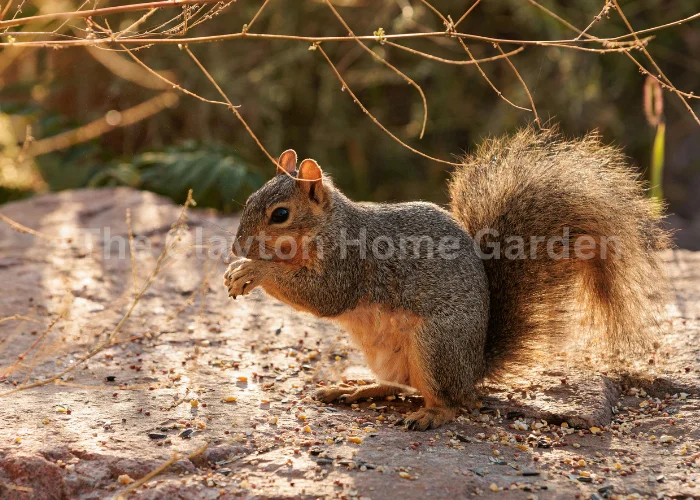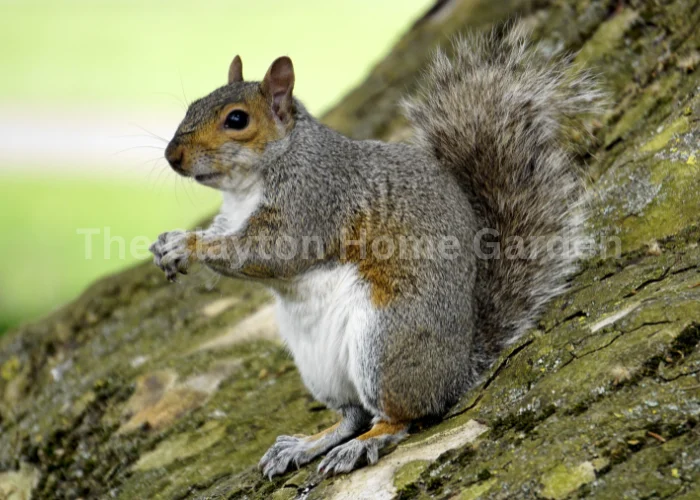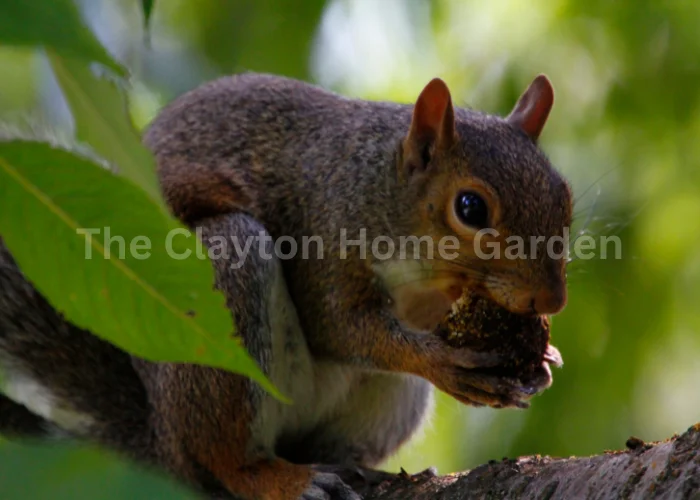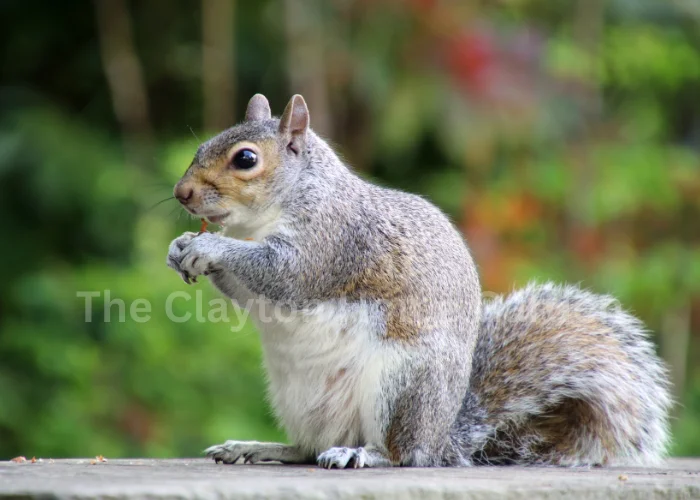How long do squirrels live ?

If you’re thinking of your pet’s backyard companions or even considering keeping the squirrel as a pet, you’ll need to know the length of time the different kinds of squirrels can live. The lifespan of squirrels varies dependent on the species and the environment.
All About Squirrels
Squirrels are mammals and rodents that belong to the family of Sciuridae. Small to medium-sized animals have distinctive bushy tails as well as sharp teeth. As rodents, they possess constantly growing front teeth, that they have to wear down through gnawing on different substances. There are more than 200 species of squirrels on the planet Each with their own unique habitat and diet.
Where Do Squirrels Live?
Squirrels can be incredibly adaptable and that are found in a variety of habitats around the world. They’re found throughout North America, Europe, Africa as well as Asia. There are three kinds of squirrels according to their habits of living:
Tree squirrels

Tree squirrels are among the most prevalent squirrels in suburban and urban regions. They live in hollows of trees or build nests high within the branches. Squirrel habitats vary greatly and allow these animals to flourish in a variety of habitats. According to their species they can be found in dense forests, deserts or in bustling cities. The ability to adapt is the main reason for their wide-ranging presence and helps them withstand environmental dangers.
Does Diet Affect a Squirrel’s Lifespan?
A squirrel’s diet plays an major part in the general wellbeing and endurance. They are omnivores. This means that they eat a diverse diet, which includes both animal and plant matter. Their most loved foods include:

Nuts (acorns and walnuts)
Seeds
Fruits
Fungi
Insects
Eggs or small animals
The diverse diet of squirrels provides them with the essential nutrients needed to support their energetic life style. As they prepare for winter, a number of squirrels engage in food caching, including burying seeds and nuts to be stored to be consumed later. This helps them to survive cold winters and aids in the growth of forests as caches left undiscovered develop and grow into trees. Although their diets are varied and varied, the amount of food they consume will significantly impact the squirrel’s longevity. A balanced diet that’s with these types of foods could increase the longevity of a squirrel since squirrels are fed properly. But, sometimes, squirrels depend on human food scraps from urban environments, which could affect their health and life span. Scraps of food are often deficient in the nutrition that squirrels require and could cause problems with their health over time.
How Long Do Squirrels Live?
Although squirrels in zoos and pets can last up to 24 years old, wild squirrels are faced with numerous challenges that drastically reduce their lifespan. A lot of them don’t make it through their first year because of predators, diseases and environmental dangers. People who survive this crucial time period can live for 6-10 year in wild. Let’s look closer at some of the most common North American squirrel species and their life spans.
American Red Squirrel

American Red squirrels in the United States are tiny wild animals found mainly throughout Canada and the northern United States. They are a favorite in coniferous forest and make their homes in hollows in trees.
Average life expectancy in the wild 2-8 years.
The longest recorded life expectancy is 8 years
Male American red squirrels typically have a slightly longer lifespan than females, however there is a slight difference. The squirrels are territorial, and will fight to defend their habitat against intruders. Continuous vigilance and a lively way of life help them break out of their natural boundaries.
Fox Squirrel

Fox squirrels are the biggest tree squirrels found in North America and are easily identified through their vivid reddish-brown fur. They’re extremely adaptable and can be found in a variety of habitats, including urban regions.
Average life span in the wild 8-18 years.
Maximum lifespan recorded Females can live for 13 years and 8 years for males.
Fox squirrels owe their strength to their capacity to flourish in a variety of environments, from woodlands to urban parks. They are able to breed twice every year, which is the reason for their relatively large population. Their family structures and social networks offer additional protection against external dangers.
Southern Flying Squirrel

Southern flying squirrels are an exceptional species that is known because of its capacity to glide across trees with a special membrane, called patagium. These night-time creatures are smaller than the majority of North American squirrels.
The average time to live in the wild 3 to 5 years
The longest recorded life expectancy is 5 years
Despite having shorter lives southern flying squirrels have been able to adapt to their nocturnal life. They usually have a group of friends to sleep in the daytime to preserve the warmth. Social interaction can be a factor in their survival.
Eastern Gray Squirrel

The gray squirrel of the eastern region is probably the most well-known squirrel species for North Americans. They are often found located in backyards, parks and in urban areas throughout all of the Eastern United States.
Average time to live in the wild 6- 12 years.
Maximum recorded life expectancy twenty years when in captivity
Eastern gray squirrels have been found to be intelligent and adaptable. They have exceptional problem-solving abilities which allow them to live in a variety of situations, from thick forest to crowded cities. These attributes, when combined with the strength of their immune system can help prolong their lifespan naturally.
Black Squirrel

The black squirrel isn’t a distinct species, but rather a coloring variation from either fox squirrel. The melanistic appearance is caused by an inherited mutation that affects the pigmentation.
Average life expectancy in the wild In the wild: 6 years
Maximum lifespan recorded In captivity, it is 18 years.
Black squirrels have the same lifestyles, diets and life spans like other non-melanistic species. Their dark coloring may offer some advantages in certain situations, leading to shorter lifespans. It provides better camouflage in specific areas and could be related to temperature regulation.
When Do Squirrels Give Birth?
Female squirrels are able to have two litters a year., mostly in middle of summer and the winter months. They are born in a brief gestation time of two months. A typical litter has between two to four pups. A litter may have as many as eight pups but smaller litters are usually more frequent.
Every tiny baby is totally hairless, and weighs at 0.5 up to 0.65 ounces. The mother squirrel begins weaning the babies around the age of two months and then seven months later, after nine months in the life cycle of squirrels Her babies turn into mature adults.
What Affects a Squirrel’s Lifespan?
there are many factors determine the length of time a squirrel can live:
Predators Wild squirrels are faced with danger from predators like the hawks, owls and snakes and domestic cats.
Disease: As with all animals, squirrels are vulnerable to a variety of diseases that could cut down their lives.
Risks to the environment Urban squirrels also face dangers, including car collisions, or the exposure of pesticides.
Access to food: Having a constant and well-balanced food supply is essential to ensure the survival of squirrels.
Qualities of the habitat: Squirrels that live in areas that have ample shelter are more likely to live longer than animals in less conducive environments.
Human interactions: While certain human activities can be harmful to squirrels, other activities include providing additional food sources, can increase their lifespan.
Squirrel Conservation Efforts
Urban expansion and deforestation often can threaten the habitat of squirrels. Conservationists strive to preserve vast areas of land that have ample resources and habitats that allow squirrels to flourish. These areas do not just benefit squirrels, they also help support many other species and improve overall ecological health.
Wildlife agencies and wildlife organizations frequently launch public awareness programs to inform people of the importance of preserving natural habitats while minimizing the impact of human activities The campaigns could also contain instructions on eating squirrels and feeding them in a way that doesn’t interfere with their natural habits or diets. The process of raising awareness can help people understand their impact on wildlife in the area, and encourages more harmonious coexistence.
Researchers are constantly studying the populations of squirrels to gather information about their health, behavior and requirements. This information can help develop more specific conservation strategies that are that are specific to each species of squirrel and their specific issues. For instance, results from these studies could result in specific interventions, such as the creation of habitat corridors for urban environments that permit the squirrels to move in a safe manner across landscapes that are fragmented.
What Is a Squirrel’s Role in the Ecosystem?
As an active part of seed dispersal,, squirrels are a key player in the regrowth of forests. If they put nuts in the ground and do not recover them, they accidentally create new trees, encouraging the growth of trees and a greater diversity. This can help propagate different species of trees.
Squirrels are prey for diverse predators, which include mammals, birds of prey as well as reptiles. Their presence is a key factor in a diverse food web. Through the maintenance of predator populations, squirrels contribute to the maintenance of balance and diversity.
Through their activities, squirrels indirectly impact soil quality and diversity, highlighting the intricate interconnections of ecosystems. The activities of their foraging and hoarding affect the distribution of plants and their health as well as improving soil conditions by aerating the soil by digging.
How Long Can Squirrels Survive on Your Property?
Squirrels are able to stay for a long time within your yard, particularly in the event that they can find a safe and secure place to build their home. The furry critters thrive in places in which their nests are shielded from the wrath of Mother Nature like walls or attics. Although wild squirrels generally have shorter lives as compared to their captive counterparts but they may live for longer than normal when they are able to access your house (thanks to their protection from natural hazards).
Squirrels in Attics
Your attic isn’t just the ideal storage spot–in the eyes of a squirrel it’s also a top listing on the market. The warmth, insulation and security from predators makes these places a popular spot for squirrels to nest and breed. Sadly, having squirrels within your home’s attic space isn’t a good idea. They are able to chew through wires, causing fire hazards, and can damage the structure of your house.
Squirrels in Walls

Wall cavities are a great place to hide. Squirrels living in wall cavities are able to enjoy a comfortable dry, safe, and dry space to settle, so they’ll happily chew through walls, wood or electrical wires as well as everything else that is in their path. This process can be quite noisy and causes serious damage that could necessitate costly (and costly) repairs.
Squirrels in Yards or Gardens

Most squirrels favor trees and other lofty areas to build their nests So gardens and yards aren’t a top choice in the real estate of rodents market. But that does not mean that they will never visit your garden or backyard to search for food. Squirrels living in yards are famous for digging up flower and plant bulbs, wrecking havoc on your garden carefully maintained for food.
Squirrels in Chimneys
Although a chimney suffocated with soot might not be a pleasant sound to me or you but it’s a beautiful warm, cozy and (presumably) secure place for squirrels looking for an ideal home. Unfortunately, nesting materials don’t work well for a chimney’s installation. The flammable leaves, twigs, moss and similar materials could stop proper airflow through your chimney. It can be an encroachment on your fire, which poses a risk to your family and yourself particularly if you frequently use your chimney and fireplace in the colder months.
Squirrels in Gutters
In the gutter, squirrels are another problem that’s common. Gutters aren’t exactly known to be dry however they provide some shelter. Therefore, squirrels love to make their homes here. For you however, this can lead to drainage issues, and consequently water damage. Because squirrels are notorious to chew on shingles and fascia boards and shingles, the damage that results from their presence can be severe.
